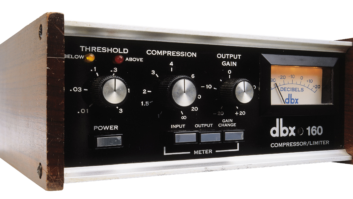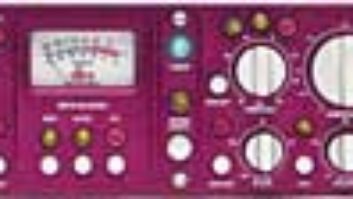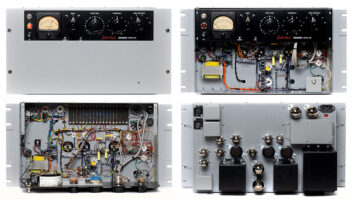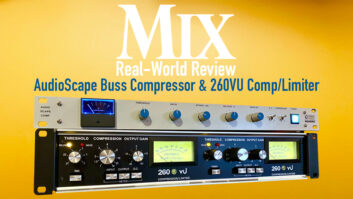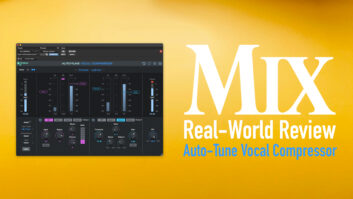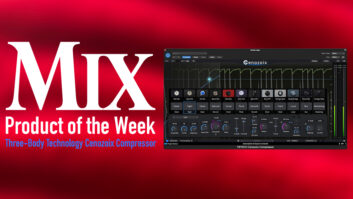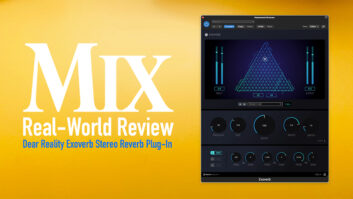
What good can come of crossing a blue-blooded compressor with an upstart? dbx knows! Its Purple Series 162SL Compressor/Limiter offers stellar performance at a substantially lower price than its Blue Series brother.
The elder statesman processors were originally created with a no-holds-barred approach to signal processing. For instance, the Blue Series 160SL compressor featured elaborate shielding for its proprietary toroidal power transformer, custom-wound Jensen transformers, an output stage capable of driving +30 dB into 1,000 feet of cable and it weighed in at roughly 40 pounds. dbx’s Purple Series 162SL compressor employs essentially the same circuitry as the 160SL, save for the output (which uses standard Jensen transformers) and a more modest toroidal transformer that doesn’t require the sophisticated shielding used in the 160SL. These design changes — along with surface-mount technology — have enabled dbx to bring in the 162SL at a retail price of $2,500 ($2,000 less than the 160SL) while maintaining the sonic virtues of the 160SL.
FEATURES FRONT AND BACK
Like the 160SL, the 162SL is a 2-channel unit packaged in a 2U-rack chassis. The channels may be operated independently or linked for stereo via the front panel couple switch. Each channel features rotary controls for threshold, ratio, output gain, attack and release times, and peak stop level for the unit’s PeakStopPlus limiter. Push-button switches are provided for Overeasy operation, auto attack and release, PeakStopPlus in/out and bypass. Analog VU meters and peak LEDs can be switched to show input, output or gain reduction; the meters are backlit using LEDs so there will be no need for replacing burnt-out lamps. On the rear panel are TRS and locking XLR I/O jacks, ¼-inch balanced sidechain send and return jacks, a +4/-10 operating level switch and an audio ground lift for each channel. A power switch and IEC receptacle complete the rear panel. A very useful manual is included. In addition to thorough explanations of compression, limiting and functions of the unit, it includes patch diagrams for I/O and sidechain applications.
DYNAMIC RESULTS
Because the attack of the 162SL can be set to a very fast 400 dB/ms, the unit is capable of altering transients if desired. In fact, the folks at dbx told us that setting the attack time too fast can actually “square off” a waveform, so attention should be paid to the attack time parameter. Setting the 162SL’s attack time to its fastest removed quite a bit of a snare drum’s whump; slowing down the attack time allowed the drum to breathe and fattened it up. Applied to a kick drum, the unit (set with fastest attack, medium release, high ratio) is capable of turning a normal kick drum into a TR808-type hip hop kick. On overheads and vocals, setting the ratio to maximum with a fast attack, medium release and a threshold between -10 and -15 resulted in a smooth, saturated compression sound.
Fortunately, the 162SL is capable of way more than just creating cool compression effects. I used it with great success for lead and backing vocals. Applying 5 to 10 dB of compression to a lead male vocal using a slow attack allowed transients and breath to remain unchanged while providing transparent gain reduction. Cranking the ratio control to around 5:1 and increasing the attack time to its fastest kept backing vocal tracks firmly in their place. One difference between the 162SL and the Blue Series 160SL is in the throw of the ratio knob: The 12 o’clock position on the 162SL is 2:1 (as opposed to the Blue’s 4:1). This gives the Purple a higher degree of motion in the critical 1:1 to 2:1 range, which proved extremely useful for easy fine-tuning of the compression ratio.
The 162SL quickly became a favorite for compressing a drum room mic (a RØDE Classic II into a Focusrite ISA110), bringing out the roundness of the toms and taming cymbal crashes. With a 5:1 or 6:1 ratio, auto attack and release and Overeasy switched off, the toms exploded with a vintage, saturated transformer sound. When Overeasy was switched on, the bottom end of the toms seemed to suffer and the track had less overall character. Lowering the threshold from an initial setting of -2 dB added pop to the ride cymbal and hi-hat. With a ratio of 15:1, a fast manual attack and medium release, the drums could be made to pump. Backing down the ratio and slowing the attack yielded a less-processed sound that placed the cymbals upfront without dulling them.
According to dbx, the 162SL is basically a 160VU “wood side” when set to auto/hard knee, and its Overeasy character duplicates that of the company’s classic 165. (It certainly sounded like it.) One of the things that surprised me is that the 162SL’s auto attack and release setting was not only useful, but often sounded better than manual settings. The sidechain worked fine for ducking guitars keyed from a lead vocal track, and PeakStopPlus does exactly what it is supposed to do (although at higher gain reductions, you can hear it working).
MY TAKE?
The 162SL’s transparent nature makes it one of the few compressors I would trust as a stereo bus compressor. As long as you follow your ears and use care in setting the attack time, the 162SL can increase apparent loudness and smooth peak levels without damaging the timbre of your mix or tracks. Its versatility and excellent sound quality will place the dbx 162SL on your list of “most often used” gear.
dbx Professional Products, 801/568-7660, www.dbxpro.com.
Steve La Cerra is a freelance engineer, producer and writer based near New York City.
